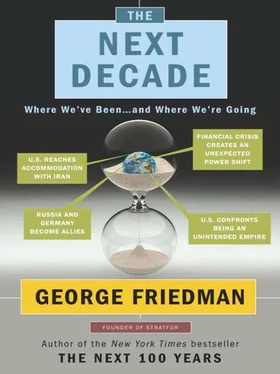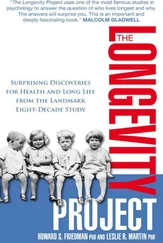There is talk of global oil output having reached its historic high and now being in decline. Certainly oil production has moved to less and less hospitable areas, such as the deep waters offshore and shale, which require relatively expensive technology. That tells us that even if oil extraction has not reached its peak, all other things being equal, oil prices will continue to rise. Offshore drilling has cost and maintenance problems. As we saw with the recent BP disaster off the coast of Louisiana, an accident happening a mile under water is hard to fix. But even apart from environmental damage, wells are very expensive. Shale installations are expensive as well, and when the price of oil falls below a certain point, extraction becomes uneconomical and the investment is tied up or lost. But leaving aside broader questions of peak prices, the increased energy consumption we will see over the next decade cannot be fueled by oil, or at least not entirely.
That leaves two choices for the ten years ahead. One is coal; the other is natural gas. Widespread conservation sufficient to reduce energy consumption in absolute terms is not going to happen in the United States, let alone the world as a whole. The ability to produce more oil is limited, and the vulnerabilities in an oil economy to interdictions by countries such as Iran make it a very risky proposition. The ability of alternative energy sources to have a decisive impact in this decade is minimal at best. No nuclear power plant started now will be operational in five or six years. But a choice between more coal and more natural gas is not the choice the president will want to make. He will want a silver bullet of rapid availability, no environmental impact, and low cost. In this decade, however, he will be forced to balance what is needed against what is available. In the end, he will pick both, with natural gas having the greater surge.
The application of hydraulic fracturing, or fracking, to the production of natural gas opens the possibility of dramatic increases in energy availability. What this technology does is to recover natural gas from up to three miles beneath the earth’s surface, where it is contained in rock so compressed that it does not release the gas. Fracturing the rock allows the gas to pool and be recovered, but this method, like all energy production on earth, carries environmental risks. Its virtue for the United States is that there are ample domestic supplies, and thus reliance on this source of energy reduces the chance of war. Natural gas readily substitutes for many uses of petroleum and in many cases at relatively low cost. This reduces the need to import oil, which in turn reduces the possibility that a foreign power will blockade the oil, thus triggering a war.
Fracking technology also makes it possible to get at enough quantities of natural gas in a short enough period of time to control the cost and availability of energy during this decade. We would expect other technologies to become available fifty or sixty years from now, but in the next ten years, the options come down to coal and gas.
This will be a time for addressing problems that have not yet turned into crises and for searching out solutions that do not yet exist. Consider the problem of water availability. Increased industrialization, along with a still-growing population enjoying higher standards of living, is already creating regional water shortages. These depletions have sometimes created political confrontations between nations that might well mature into wars. Add to this the possibility that climate change might alter weather patterns and that those changes might reduce rainfall in populated areas, and the problem could become a crisis.
There is, of course, no water shortage. The water is simply mixed with salt and inconveniently located, but it exists in staggeringly vast quantities. The technology needs improvement, but we do know how to desalinate water. We also know how to transport water in pipelines. The problem is that desalination and water transportation are both hugely expensive and require enormous amounts of energy. That sort of energy will not be found in available solutions. As I said in The Next 100 Years, we will need space-based solar generation or other very radical approaches to increase available energy by orders of magnitude.
When we look at the major problems we have to solve, such as aging population, contracting workforce, and lack of water, we find a consistent pattern. First, the problem is emerging in this decade, but it will not become an unbearable burden until later. Second, the technologies to deal with it—from cures for degenerative diseases to robotics to desalination—either exist or can be conceived of, but are not yet fully in place. Third, implementing almost all of them (save the cure for degenerative diseases) requires both a short-term solution for energy and a long-term solution.
The danger is that the problem and the solution will become unbalanced—that the problem will get to the crisis stage before the technical solutions come on line. The task of the president in addressing these issues in the next decade is not dramatic. It will be to facilitate short-term solutions while laying the groundwork for longer-term solutions and, above all, to do both rather than just one. The temptation will be to look at the long-term solution and pretend that the problem will wait or that the solution will arrive faster than it can. Long-term solutions are more attractive and cause much less controversy than short-term solutions, which will affect people who are still alive and voting. The problem that presidents in this decade will have is that the crisis won’t happen on their watch but in the decade that follows. The temptation to punt the issue will be substantial. This is where another drop of wisdom from Machiavelli becomes especially important: successful rulers want to do more than rule, they want to be remembered for all time. John Kennedy didn’t have time to do much, but we all remember his decision to go to the moon.
In the short term, the most crucial problem is to lay the groundwork for the energy requirements of the next decade. To do this, two things must happen. The president must choose the balance between the two available fossil fuels, coal and gas. Then he must tell the people that these are the only choices. If he fails to persuade the public of this, there will not be energy for the technologies that will emerge in the next decade. He must, of course, frame his argument within the context of global warming, climate change, and the desire to protect all species. The environmental movement has supported Obama, and every president must maintain his political base. But while appealing to his green constituents, he must make the case for enhanced natural gas and coal use for the generation of electricity. He may well be able to frame his appeal in terms of more electric cars, but however he makes it, this is his task. Otherwise, he will be seen as having neglected a crisis that he could foresee.
At the same time he must prepare for long-term increases in energy generation from nonhydrocarbon sources—sources that are cheaper and located in areas that the United States will not need to control by sending in armies. In my view, this is space-based solar power. Therefore, what should be under way, and what is under way, is private-sector development of inexpensive booster rockets. Mitsubishi has invested in space-based solar power to the tune of about $21 billion. Europe’s EAB is also investing, and California’s Pacific Gas and Electric has signed a contract to purchase solar energy from space by 2016, although I think fulfillment of that contract on that schedule is unlikely.
However, whether the source is space-based solar power or some other technology, the president must make certain that development along several axes is under way and that the potential for building them is realistic. Enormous amounts of increased energy are needed, and the likely source of the technology, based on history, is the U.S. Department of Defense. Thus the government will absorb the cost of early development and private investment will reap the rewards.
Читать дальше












